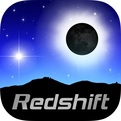Herschel's first year in space
Herschel reveals the hidden side of star birth
- » 1 - An ‘impossible’ star
- » 2 - Infrared light from thousands of galaxies
An ‘impossible’ star
“This star can only grow bigger,” says Annie Zavagno, Laboratoire d’Astrophysique de Marseille. Massive stars are rare and short-lived. To catch one during formation presents a golden opportunity to solve a long-standing paradox in astronomy. “According to our current understanding, you should not be able to form stars larger than eight solar masses,” says Dr Zavagno.
This is because the fierce light emitted by such large stars should blast away their birth clouds before any more mass can accumulate. But somehow they do form. Many of these ‘impossible’ stars are already known, some containing up to 150 solar masses, but now that Herschel has seen one near the beginning of its life, astronomers can use the data to investigate how it is defying their theories.
Herschel is the largest astronomical telescope ever to be placed into space. The diameter of its main mirror is four times larger than any previous infrared space telescope and one and a half times larger than Hubble. As stars begin to form, the surrounding dust and gas is warmed up to a few tens of degrees above absolute zero and starts to emit at far-infrared wavelengths. The Earth's atmosphere completely blocks the majority of these wavelengths and thus observations from space are necessary.
Herschel's first year in space
Herschel reveals the hidden side of star birth
- » 1 - An ‘impossible’ star
- » 2 - Infrared light from thousands of galaxies
An ‘impossible’ star
“This star can only grow bigger,” says Annie Zavagno, Laboratoire d’Astrophysique de Marseille. Massive stars are rare and short-lived. To catch one during formation presents a golden opportunity to solve a long-standing paradox in astronomy. “According to our current understanding, you should not be able to form stars larger than eight solar masses,” says Dr Zavagno.
This is because the fierce light emitted by such large stars should blast away their birth clouds before any more mass can accumulate. But somehow they do form. Many of these ‘impossible’ stars are already known, some containing up to 150 solar masses, but now that Herschel has seen one near the beginning of its life, astronomers can use the data to investigate how it is defying their theories.
Herschel is the largest astronomical telescope ever to be placed into space. The diameter of its main mirror is four times larger than any previous infrared space telescope and one and a half times larger than Hubble. As stars begin to form, the surrounding dust and gas is warmed up to a few tens of degrees above absolute zero and starts to emit at far-infrared wavelengths. The Earth's atmosphere completely blocks the majority of these wavelengths and thus observations from space are necessary.





